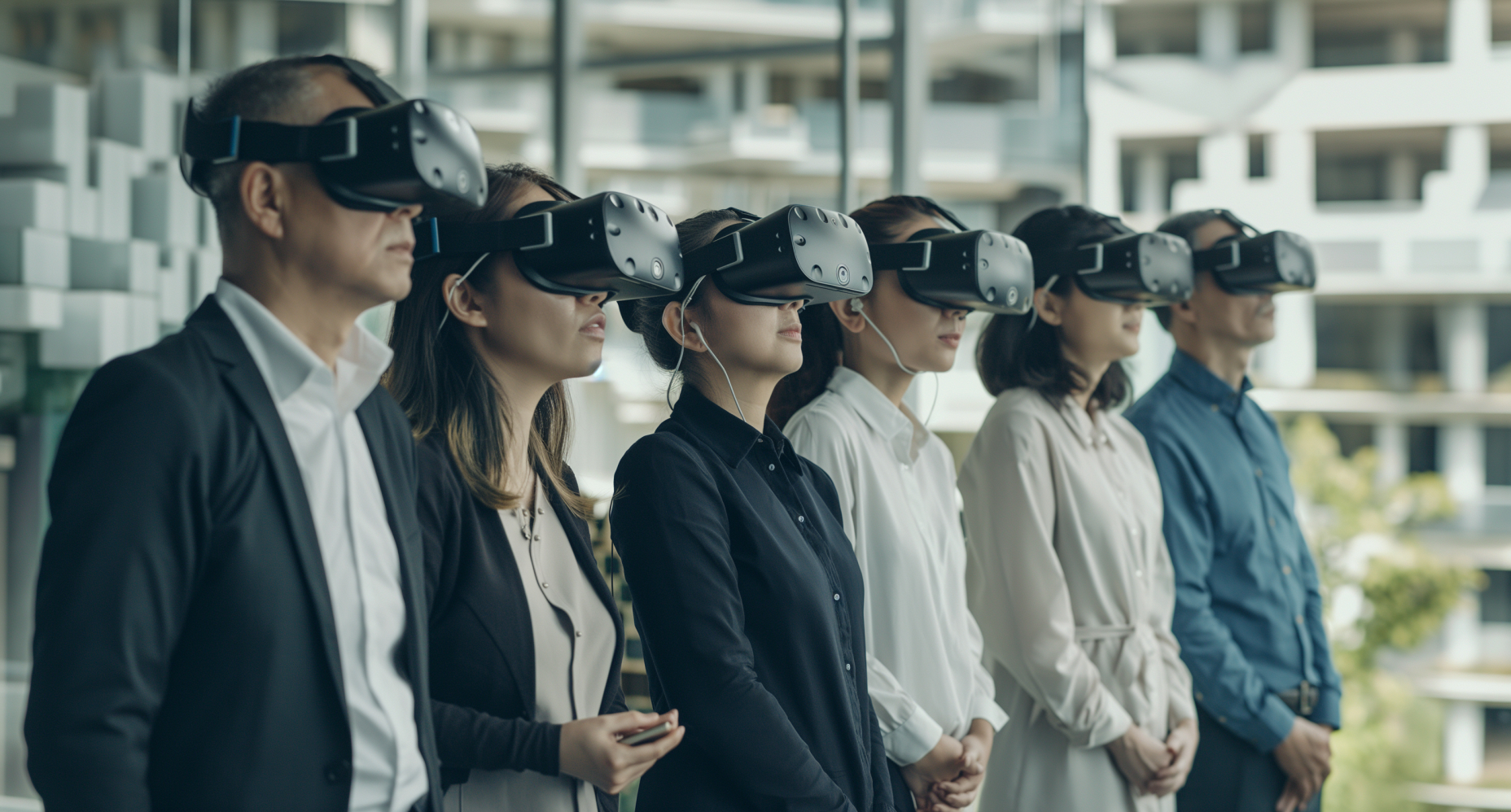Architects: Want to have your project featured? Showcase your work through Architizer and sign up for our inspirational newsletters.
Hong Kong’s iconic skyline is a testament to the city’s growth and innovative design. As one of the most densely populated urban areas in the world, Hong Kong has embraced skyscrapers as a solution to its spatial constraints, resulting in a skyline dominated by towering structures that serve as both residential and commercial hubs.
Exploring this idea further, we’re delving into the world of skyscraper design in Hong Kong, exploring the unique architectural features and design strategies employed in some of the city’s most iconic buildings. Through a series of section drawings, you can discover these skyscrapers and how they are organized, uncovering the intricate details that make them not only architectural marvels but also functional and sustainable structures that define Hong Kong’s urban landscape. Join us as we take a closer look at the skyscrapers that touch the sky in this dynamic city.
Jockey Club Innovation Tower
By Zaha Hadid Architects, Hong Kong

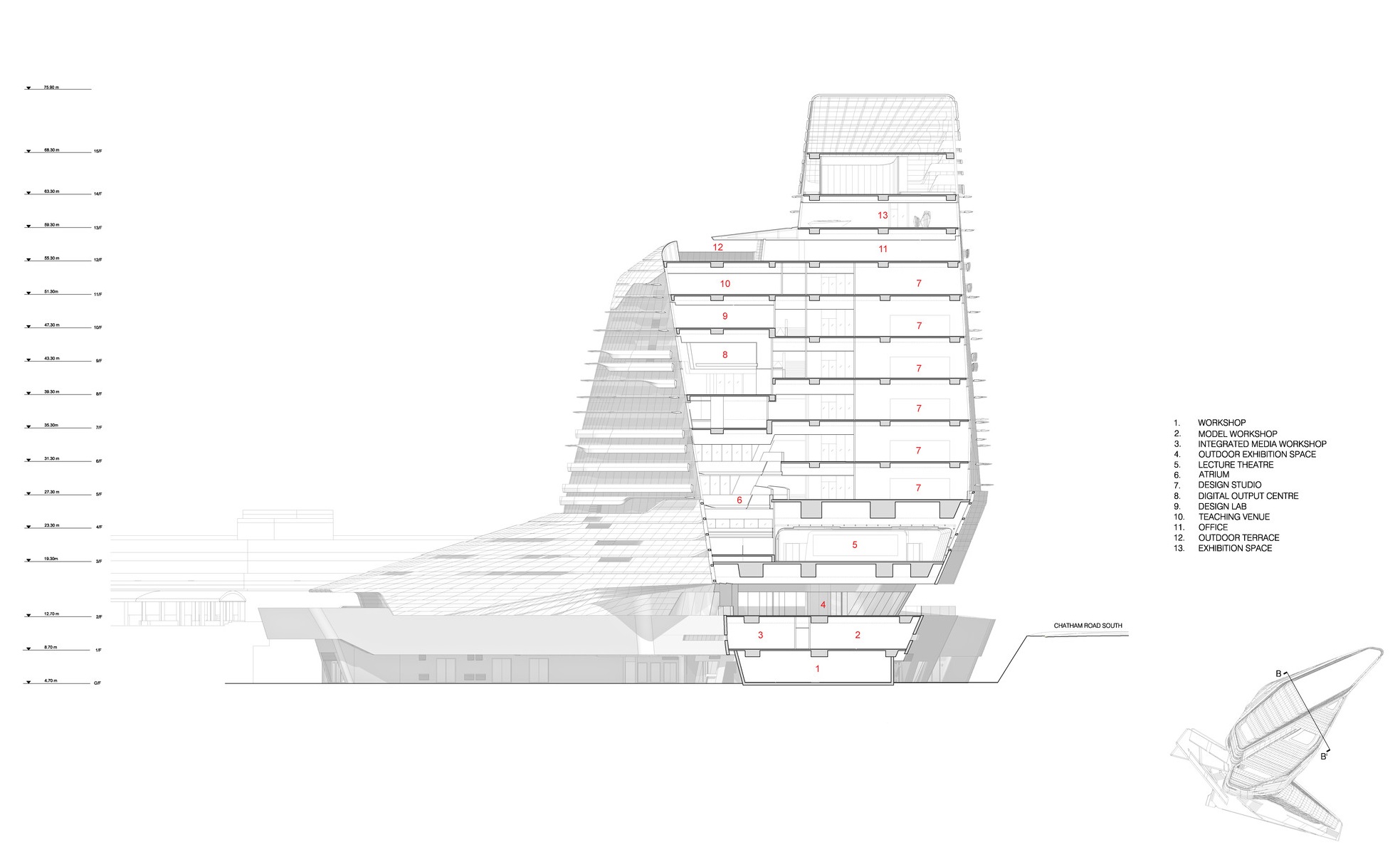
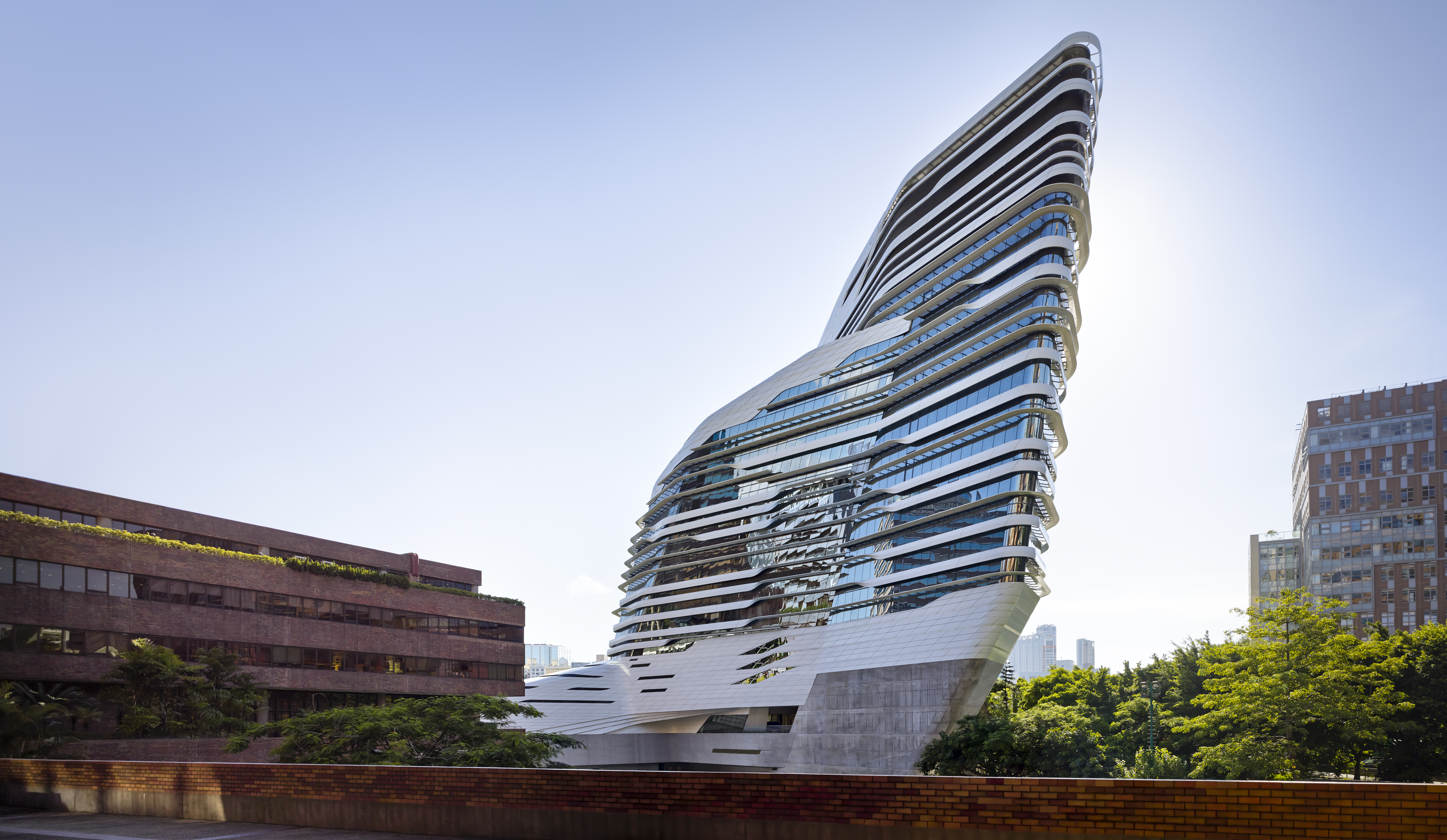 The 15-story Jockey Club tower at Hong Kong Polytechnic University accommodates over 1,800 students and staff. It features design studios, labs, workshops, exhibition areas, multi-functional classrooms, a lecture theater and a communal lounge. Situated on a narrow, irregular site at the university’s north-eastern tip, bordered by the football ground to the south and the Chatham Road/Kowloon Corridor motorway interchange to the north, the JCIT connects to the campus heart. This connection encourages multidisciplinary initiatives and engagement with various stakeholders.
The 15-story Jockey Club tower at Hong Kong Polytechnic University accommodates over 1,800 students and staff. It features design studios, labs, workshops, exhibition areas, multi-functional classrooms, a lecture theater and a communal lounge. Situated on a narrow, irregular site at the university’s north-eastern tip, bordered by the football ground to the south and the Chatham Road/Kowloon Corridor motorway interchange to the north, the JCIT connects to the campus heart. This connection encourages multidisciplinary initiatives and engagement with various stakeholders.
The design of the JCIT breaks away from typical tower/podium typology, creating a fluid composition. Interior and exterior courtyards provide informal meeting spaces that complement the large forums, studios, theatre and recreational facilities. The tower fosters a multidisciplinary environment, connecting various programs within the School of Design. It promotes a collective research culture where innovations can flourish. Interior glazing and voids enhance transparency and connectivity, while circulation routes and communal spaces encourage interaction between learning clusters and design disciplines.
International Commerce Centre
By Kohn Pedersen Fox Associates, Hong Kong
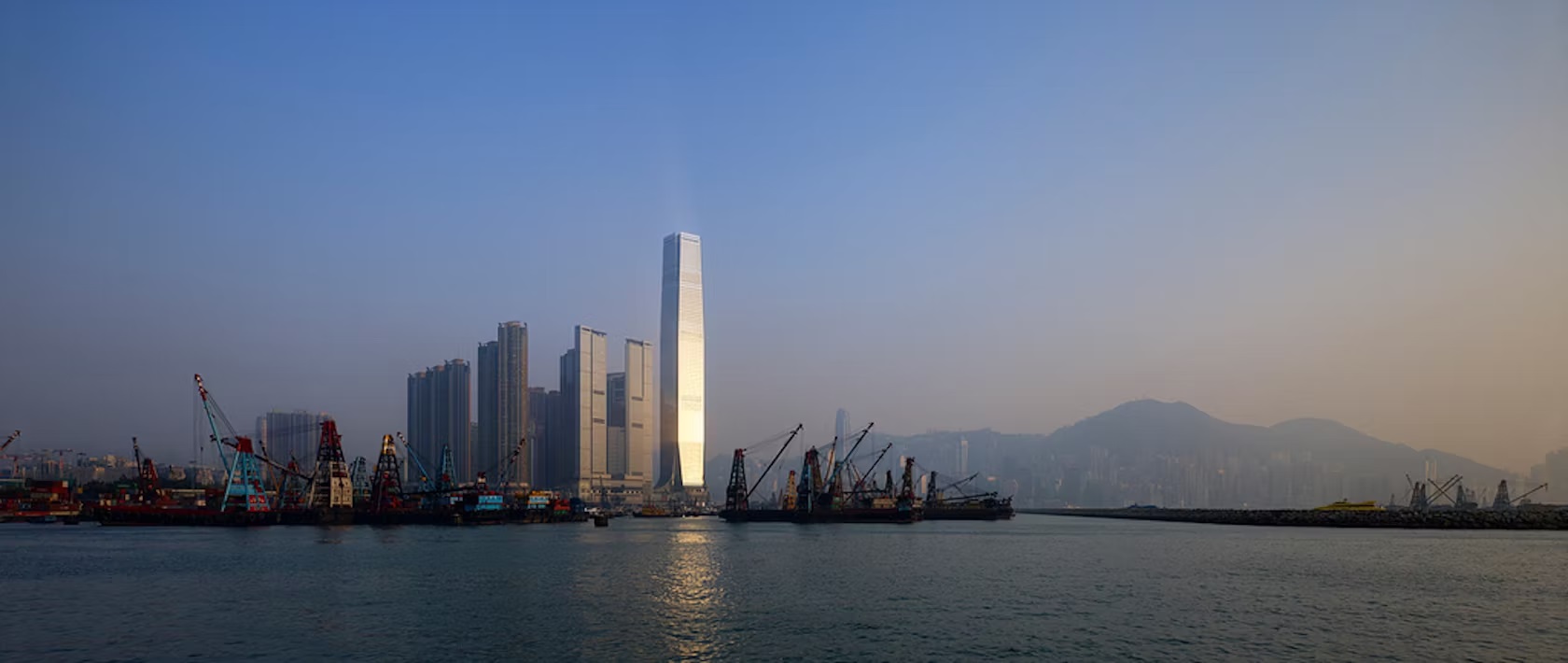

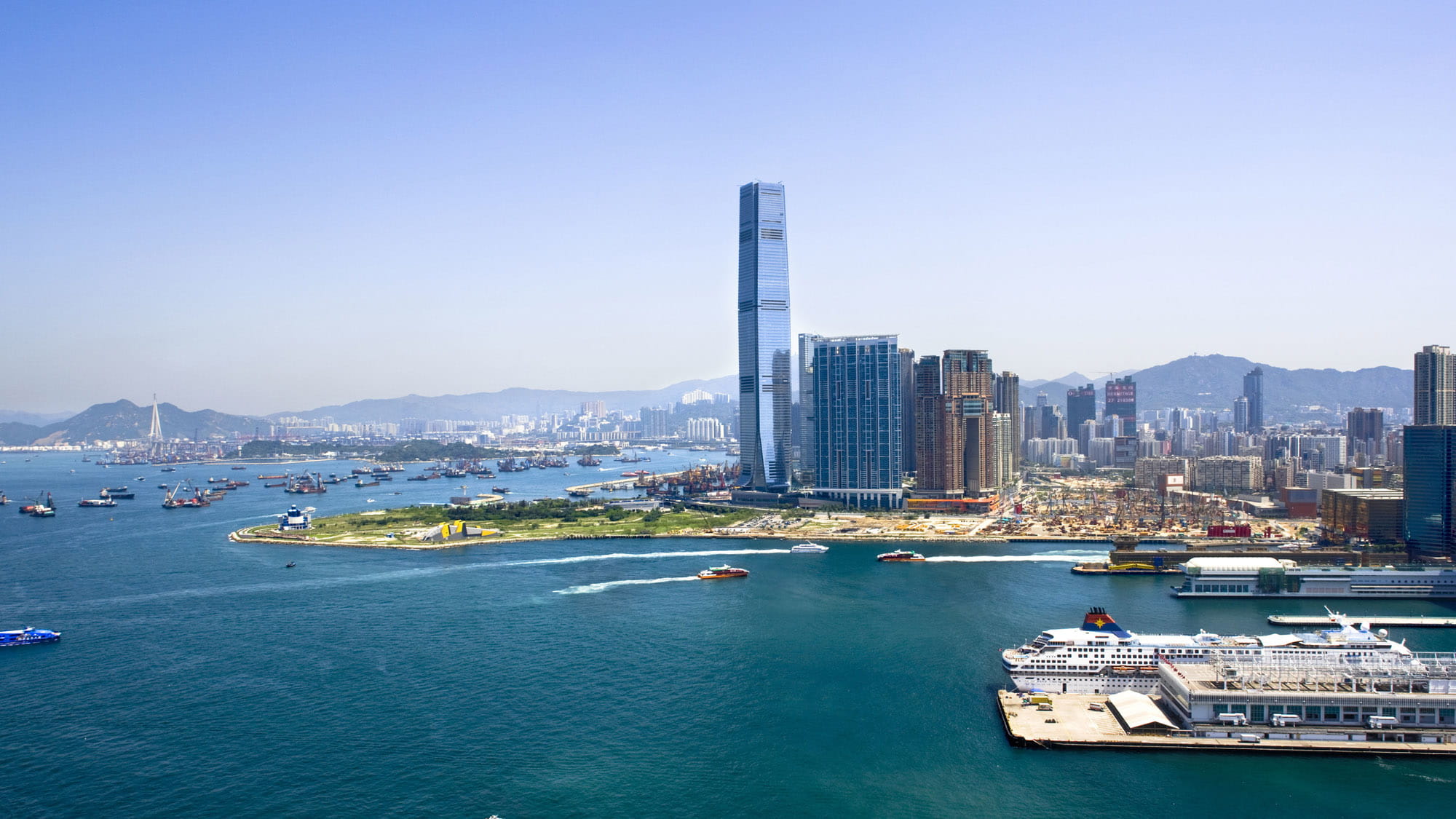 KPF’s 118-story International Commerce Centre (ICC) tower is a landmark in both scale and sustainability. It features offices, a 360-degree observation deck, and The Ritz-Carlton Hong Kong, the world’s highest hotel. The tower is the focal point of the Union Square reclamation project, a development that emerged from an international design competition. Part of the Union Square project, the ICC tower anchors a new urban center with offices, retail, hotel and recreation spaces, along with the Kowloon Station transportation hub linking Hong Kong to Hong Kong International Airport.
KPF’s 118-story International Commerce Centre (ICC) tower is a landmark in both scale and sustainability. It features offices, a 360-degree observation deck, and The Ritz-Carlton Hong Kong, the world’s highest hotel. The tower is the focal point of the Union Square reclamation project, a development that emerged from an international design competition. Part of the Union Square project, the ICC tower anchors a new urban center with offices, retail, hotel and recreation spaces, along with the Kowloon Station transportation hub linking Hong Kong to Hong Kong International Airport.
As Hong Kong’s tallest building, the ICC exemplifies green urban design principles. Designed with subtly tapered re-entrant corners and gently sloped curves at its base, the tower also optimizes structural performance. These features root the tower in its surroundings, creating sheltering canopies on three sides and a dramatic atrium on the north side, which serves as a public connection space.
The Beacon
By Aedas, Hong Kong
![]()
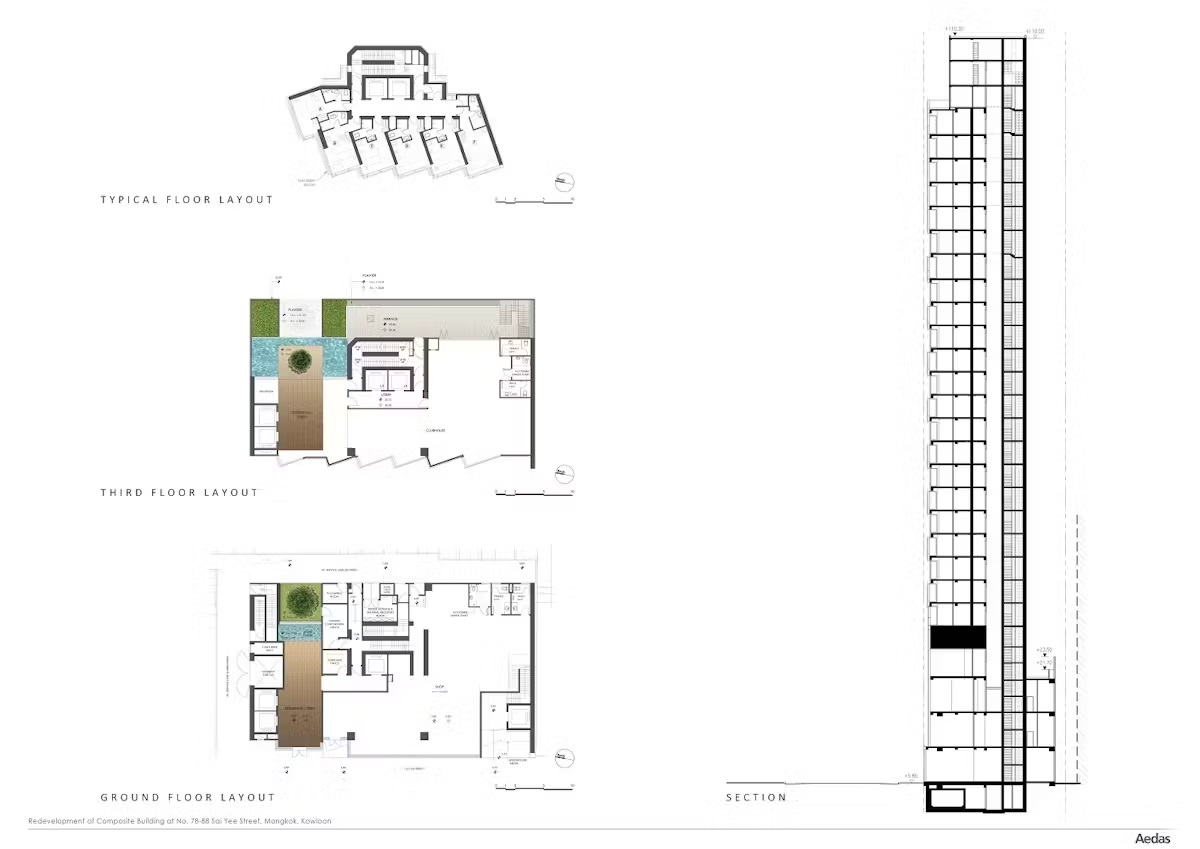
![]() In the hyper-dense neighborhood of Mongkok, Aedas was tasked with designing a serviced apartment building. Despite the challenging small sites, the building will provide serviced apartment accommodation. Drawing inspiration from the illegal iron balconies common in Mongkok’s early post-war years, the team reinterpreted these structures with irregular protrusions to offer unobstructed views for each apartment. A green wall, inspired by home gardens on balconies, extends from the solid façade of the podium, connecting the building with the historical cityscape and enhancing the neighborhood’s greenery at the pedestrian level.
In the hyper-dense neighborhood of Mongkok, Aedas was tasked with designing a serviced apartment building. Despite the challenging small sites, the building will provide serviced apartment accommodation. Drawing inspiration from the illegal iron balconies common in Mongkok’s early post-war years, the team reinterpreted these structures with irregular protrusions to offer unobstructed views for each apartment. A green wall, inspired by home gardens on balconies, extends from the solid façade of the podium, connecting the building with the historical cityscape and enhancing the neighborhood’s greenery at the pedestrian level.
To further integrate with the surroundings, the building is set back from the street, allowing for more planting opportunities and creating a breathing space in the dense neighborhood. This transformation of the outdoor landscape also serves as an urban backdrop for the building’s public areas, including an entrance lobby on the ground level and a transit lift lobby on the second floor.
Victoria Dockside
By Kohn Pedersen Fox Associates, Hong Kong

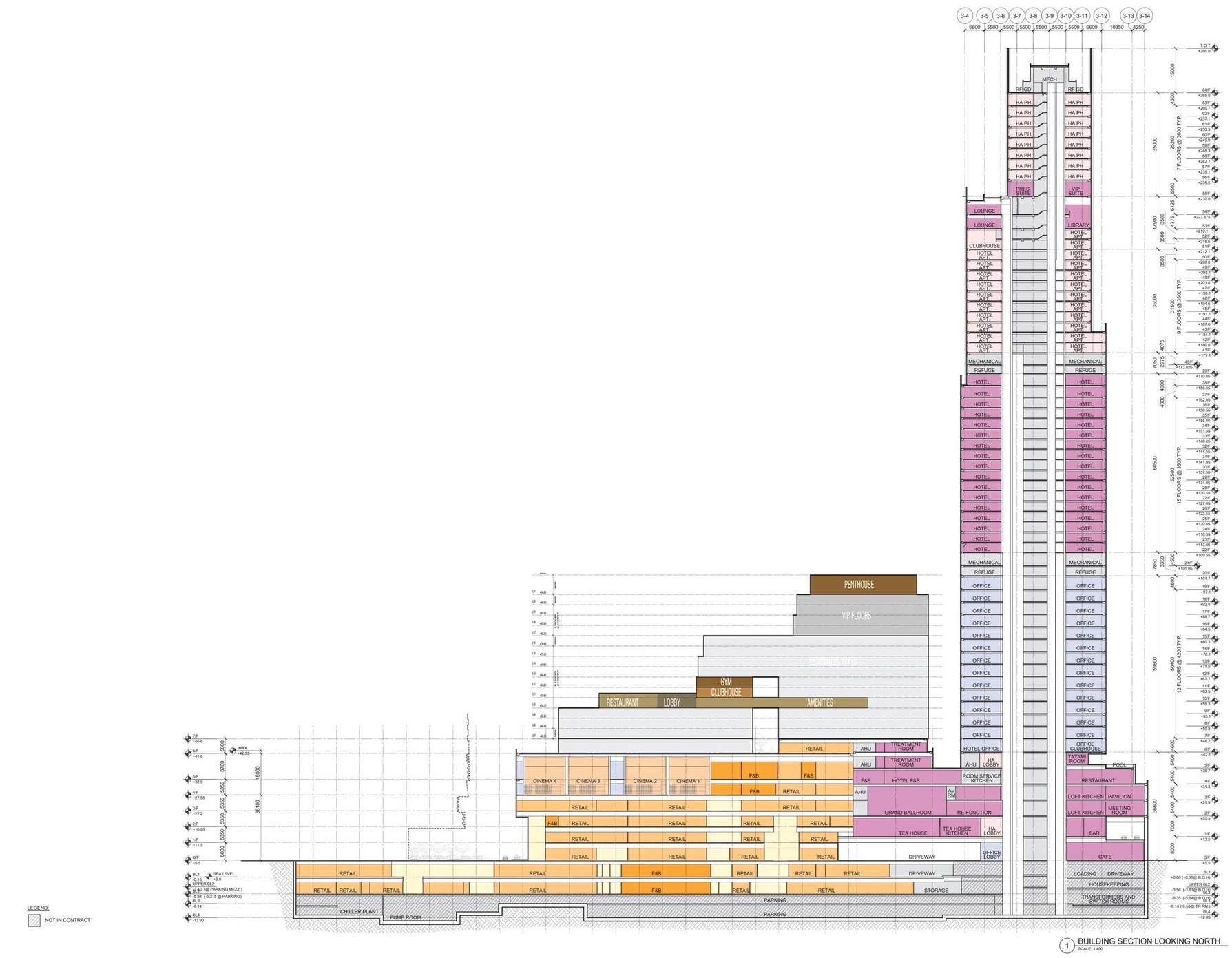
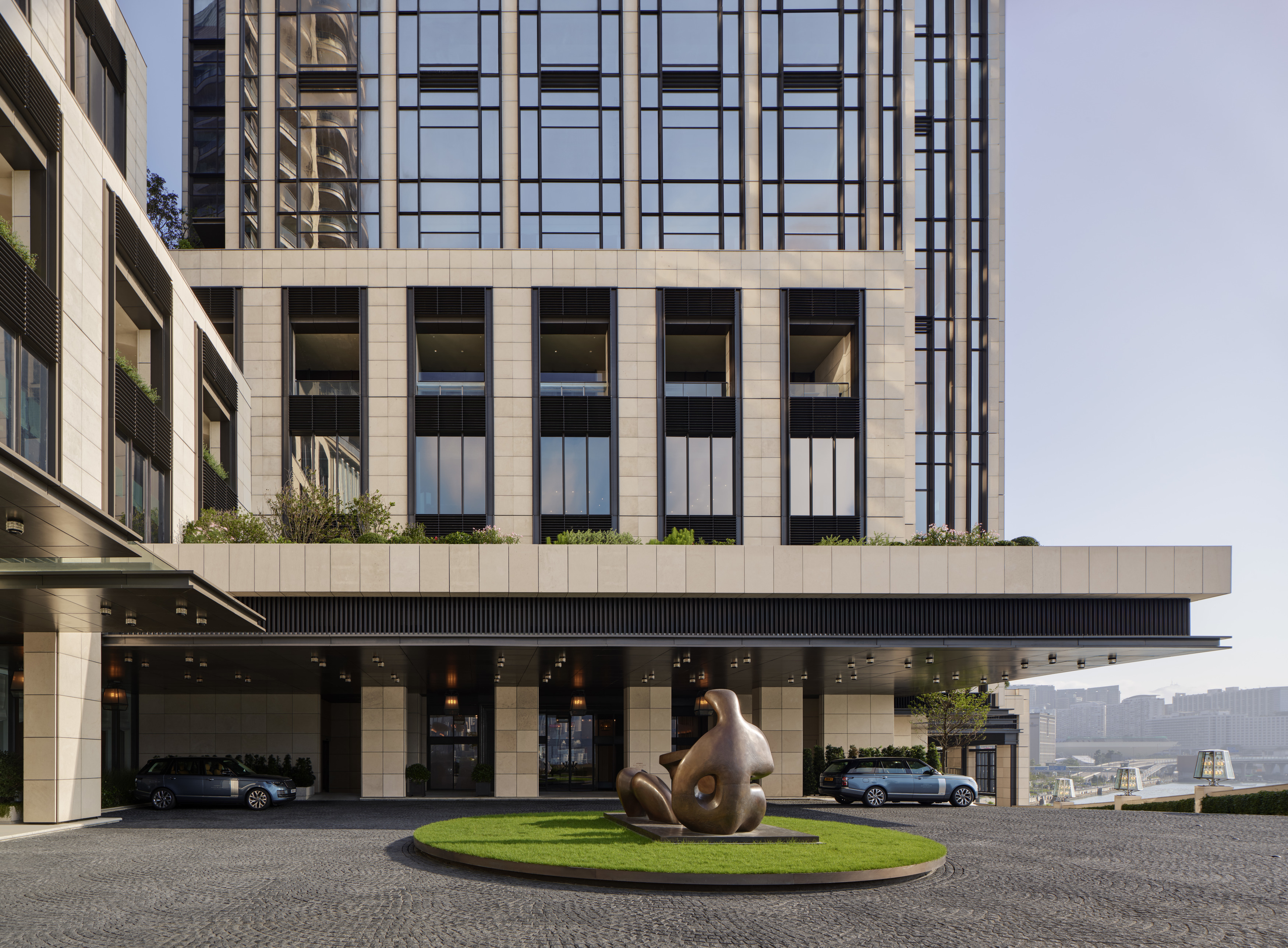 Victoria Dockside, situated at the tip of Kowloon Peninsula, stands as a vibrant, mixed-use development in the heart of Hong Kong’s Victoria Harbor. This reimagined space integrates hotel, office and cultural components with outdoor public areas, reviving the waterfront public realm. Architecturally diverse, the site mirrors its varied program elements, featuring a rich materiality of stone, glass, and metal finishes.
Victoria Dockside, situated at the tip of Kowloon Peninsula, stands as a vibrant, mixed-use development in the heart of Hong Kong’s Victoria Harbor. This reimagined space integrates hotel, office and cultural components with outdoor public areas, reviving the waterfront public realm. Architecturally diverse, the site mirrors its varied program elements, featuring a rich materiality of stone, glass, and metal finishes.
The Rosewood Tower, a focal point along the waterfront, combines short-stay hotel amenities, serviced residences and boutique office space. Its stepped, irregular massing reflects its diverse functions while maintaining a cohesive exterior. Panoramic glass insets provide stunning views of Victoria Harbor, and stone piers accentuate the tower’s verticality, offering a dynamic skyline experience from different perspectives in Hong Kong. Adjacent to the tower, a renovated mid-rise structure features undulating, horizontal ribbons along its facade, creating texture and balcony spaces.
Hysan Place
By Kohn Pedersen Fox Associates, Hong Kong
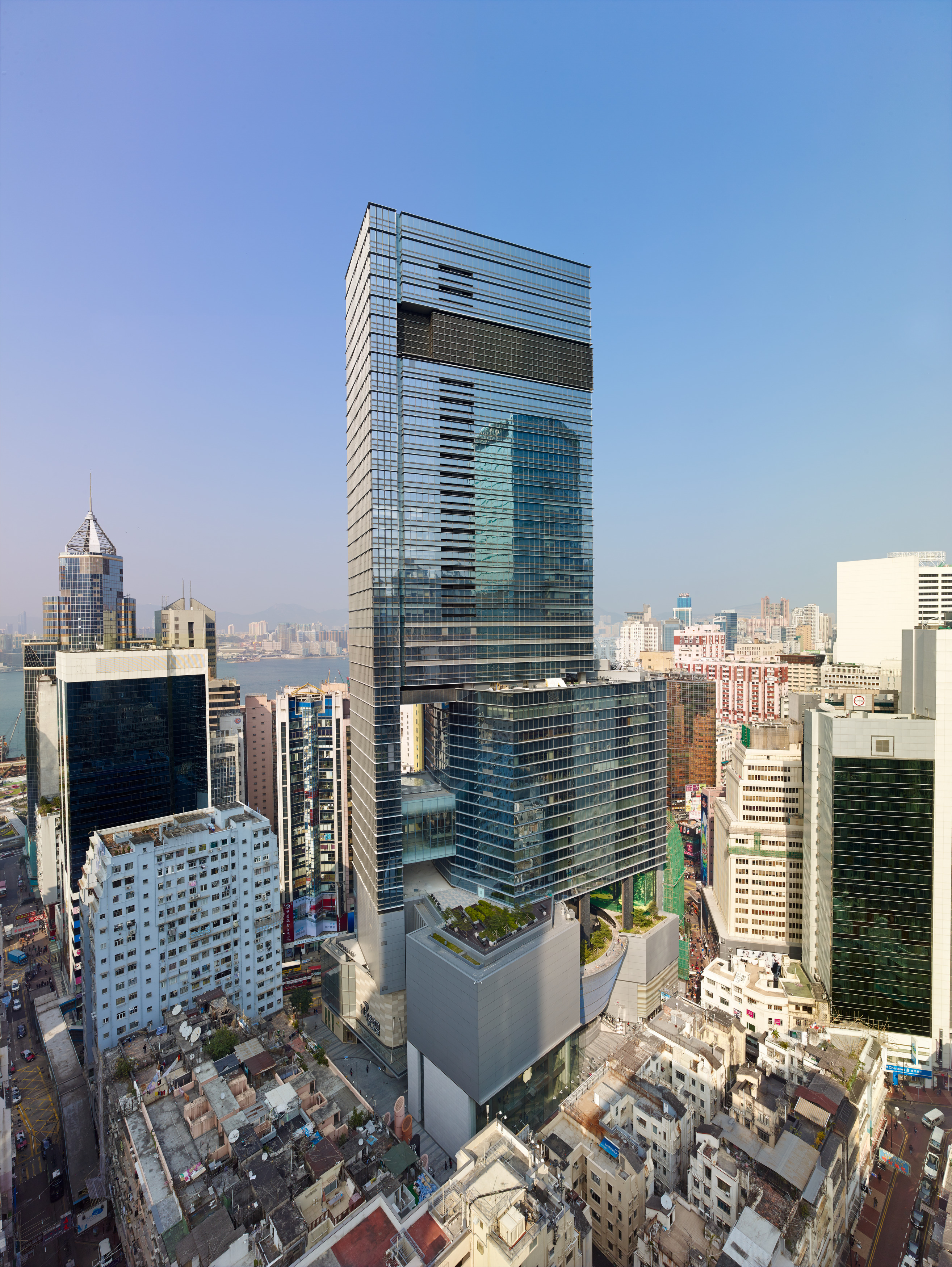
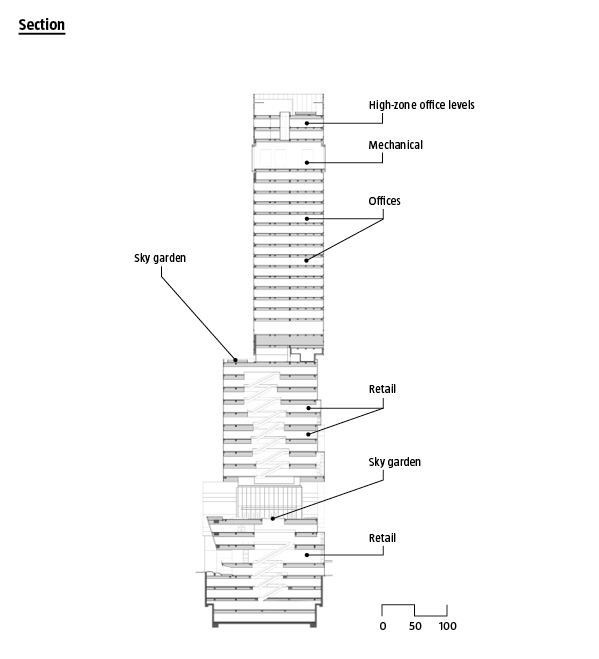
 Hysan Place, the first LEED Platinum certified commercial project in Hong Kong, sets a new standard in sustainable design. It provides a vibrant mix of retail and office space, serving as an urban oasis in one of Hong Kong’s densest neighborhoods. Key to the project was long-term planning flexibility and synergy between uses. This was achieved by considering the building’s design holistically, maintaining the relationship of all parts, from massing and shifting forms to occupant health and natural light.
Hysan Place, the first LEED Platinum certified commercial project in Hong Kong, sets a new standard in sustainable design. It provides a vibrant mix of retail and office space, serving as an urban oasis in one of Hong Kong’s densest neighborhoods. Key to the project was long-term planning flexibility and synergy between uses. This was achieved by considering the building’s design holistically, maintaining the relationship of all parts, from massing and shifting forms to occupant health and natural light.
The scheme’s composition features shifting forms designed to optimize internal planning and generate vertical gardens over the building’s height. These gardens provide rooftop oases and openings for breezes, enhancing pedestrian comfort at ground level and the surrounding environment of Causeway Bay. The retail podium offers a mix of planning models with public gathering spaces, unifying the shopping experience and providing unique activity areas. Five semi-retail floors between retail and office spaces are designed with internal planning flexibility for long-term reuse.
HongKong Shanghai Bank HQ
By Foster + Partners, Hong Kong
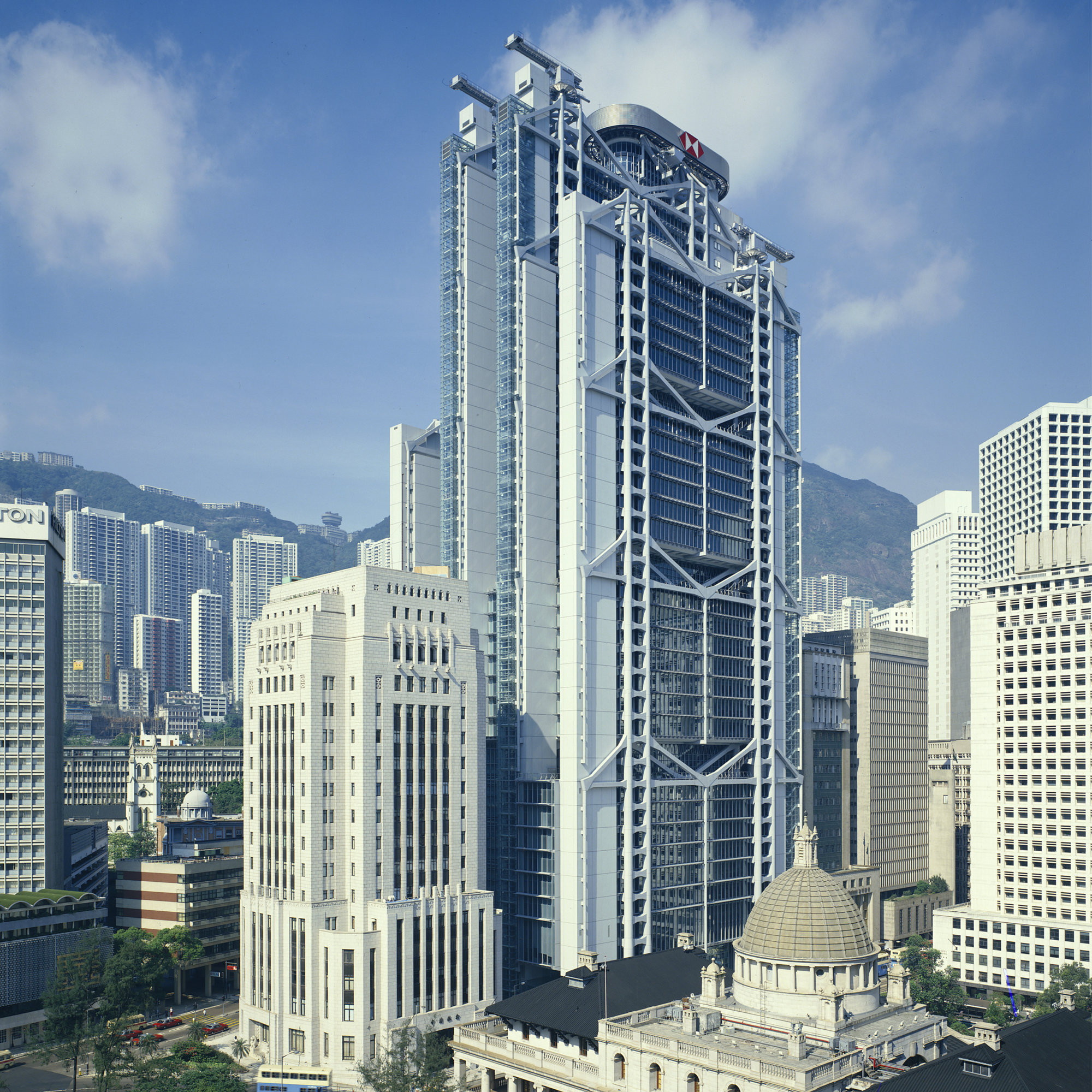
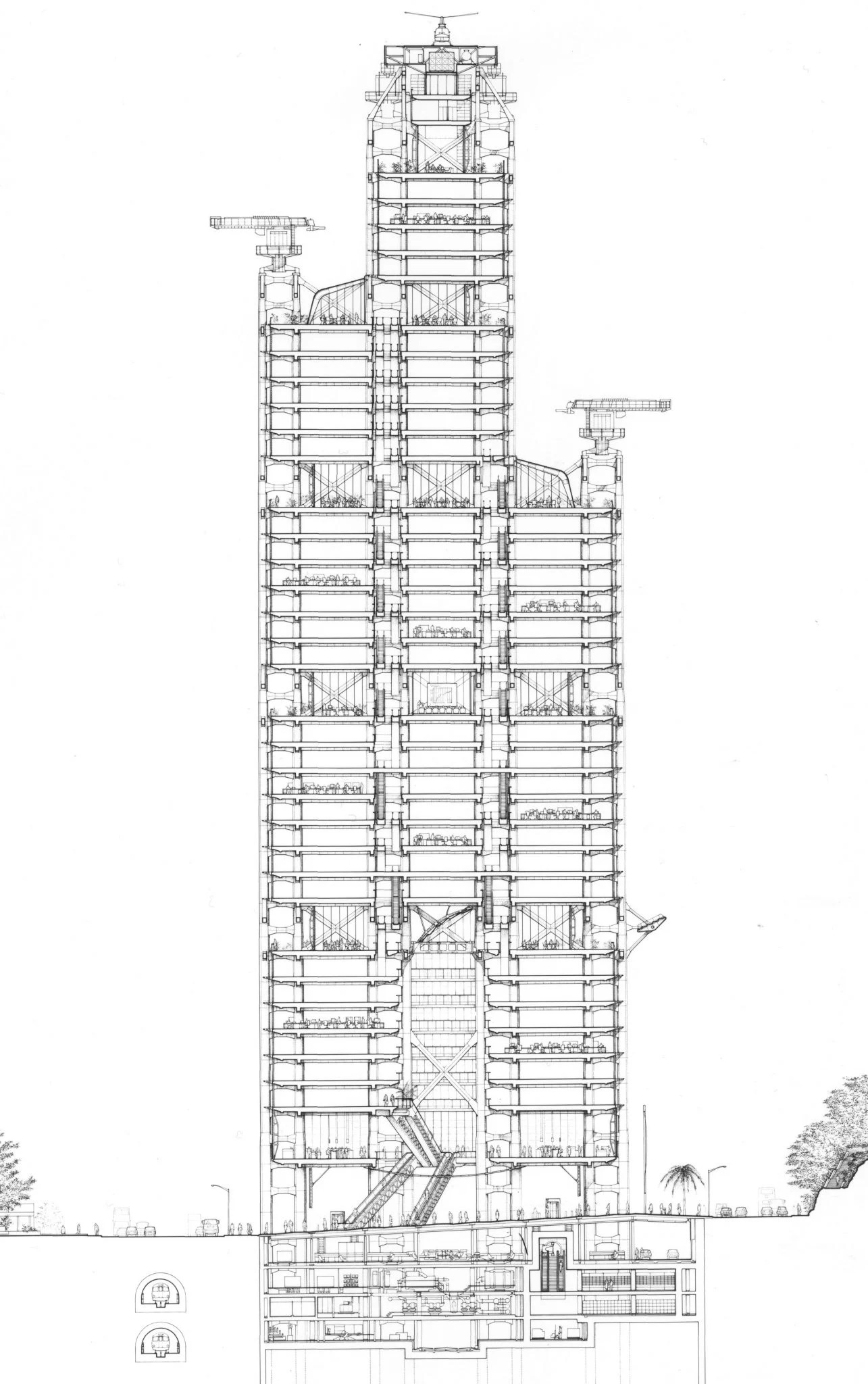
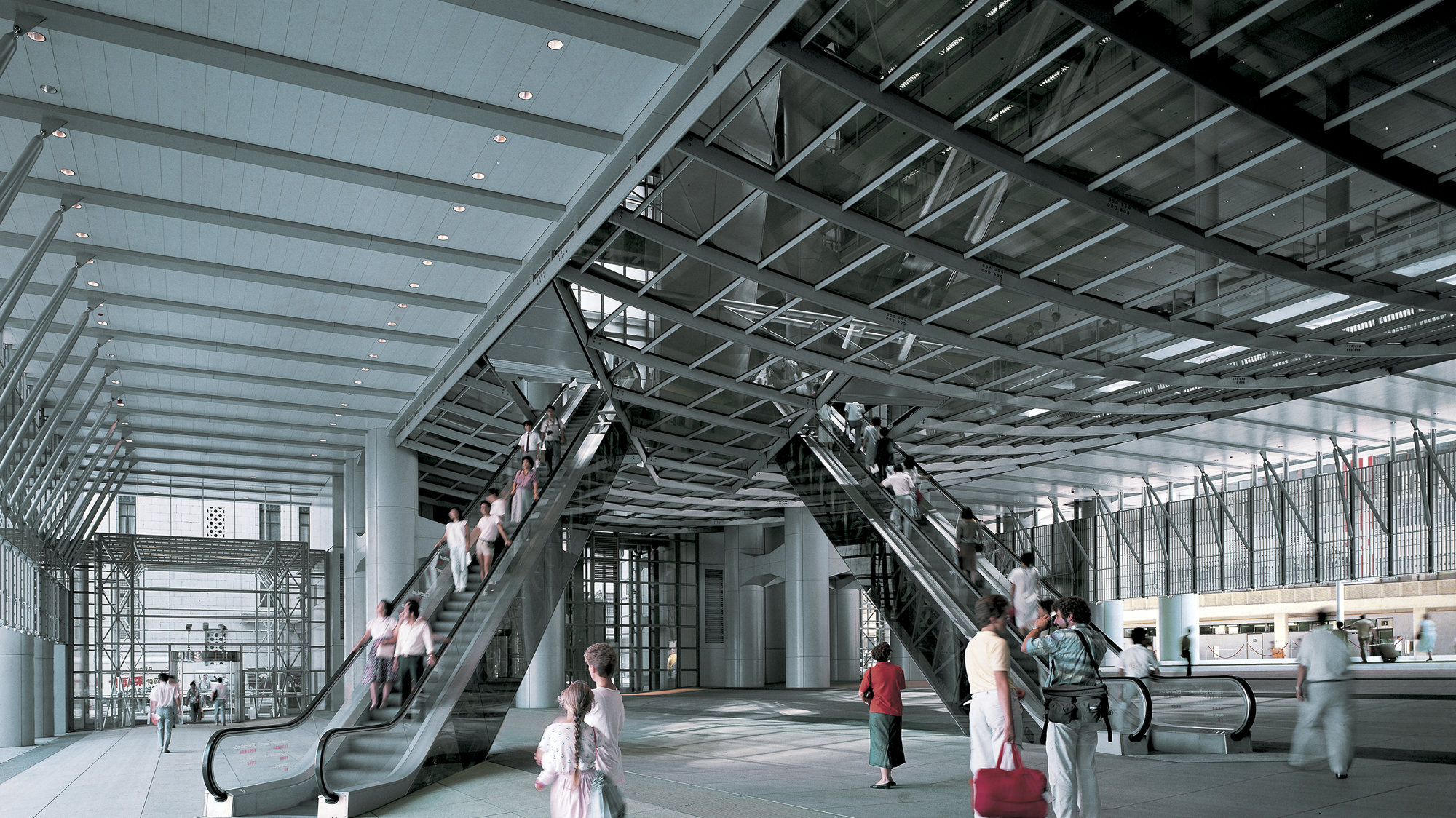 Conceived during a pivotal period in Hong Kong’s history, the Hongkong and Shanghai Bank Headquarters project aimed to create ‘the best bank building in the world’, embodying the city’s confidence. The design process, which involved questioning and challenging traditional banking architecture, resulted in a reimagined office tower. To meet the challenge of constructing over a million square feet within a tight timeframe, the project embraced prefabrication, using factory-finished modules. A suspension structure with pairs of steel masts in three bays allowed for simultaneous upward and downward construction.
Conceived during a pivotal period in Hong Kong’s history, the Hongkong and Shanghai Bank Headquarters project aimed to create ‘the best bank building in the world’, embodying the city’s confidence. The design process, which involved questioning and challenging traditional banking architecture, resulted in a reimagined office tower. To meet the challenge of constructing over a million square feet within a tight timeframe, the project embraced prefabrication, using factory-finished modules. A suspension structure with pairs of steel masts in three bays allowed for simultaneous upward and downward construction.
This innovative approach created a stepped profile with three towers of varying heights, offering garden terraces and floors of different widths and depths. The mast structure also enabled the placement of service cores on the perimeter, surrounding a ten-story atrium illuminated by a mirrored ‘sunscoop’. The building’s design includes ‘bridges’ between the masts, defining double-height reception areas that break down the building’s scale.
Architects: Want to have your project featured? Showcase your work through Architizer and sign up for our inspirational newsletters.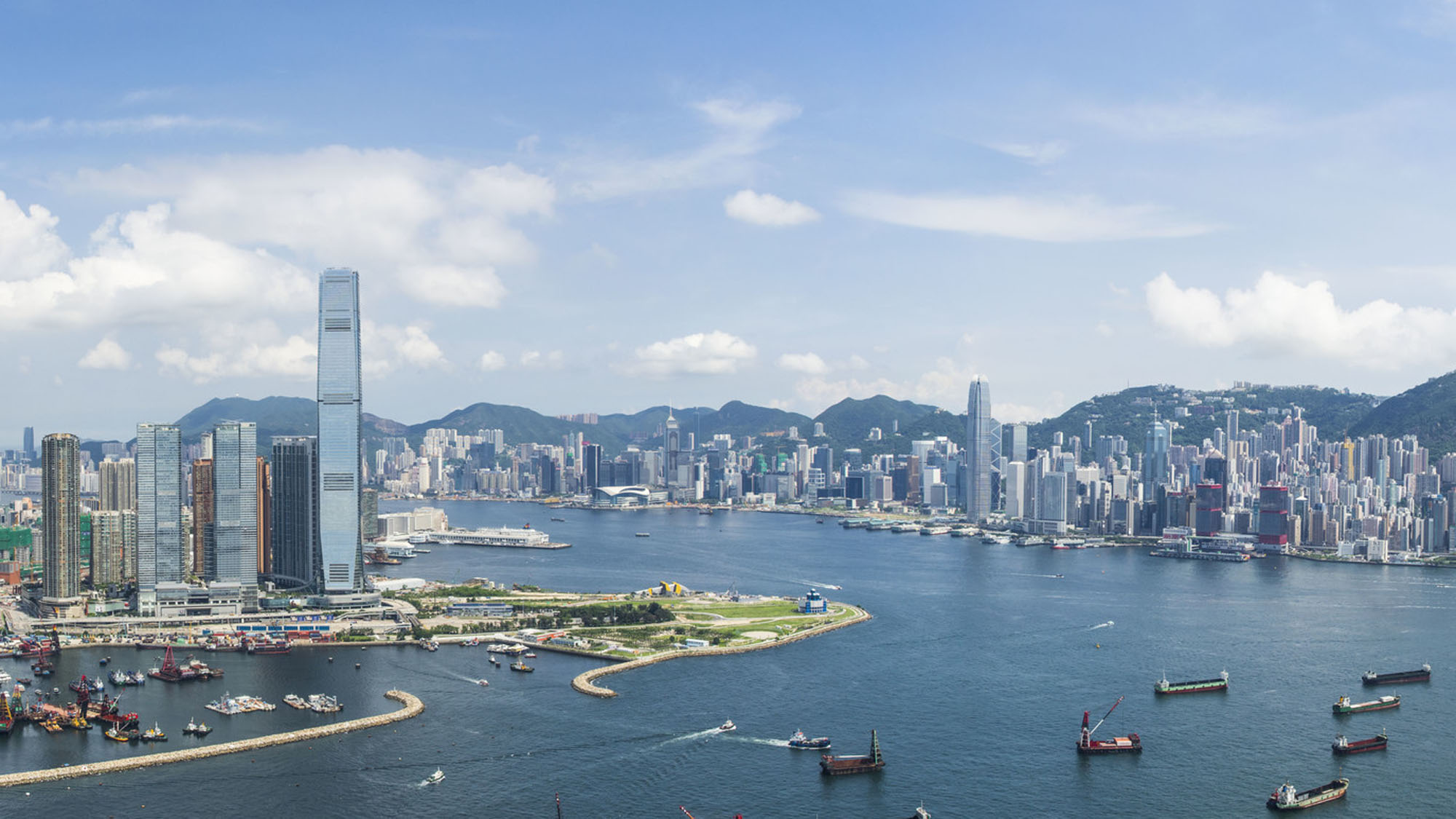





 HongKong Shanghai Bank HQ
HongKong Shanghai Bank HQ  International Commerce Centre
International Commerce Centre  Jockey Club Innovation Tower
Jockey Club Innovation Tower  The Beacon
The Beacon  Victoria Dockside
Victoria Dockside 